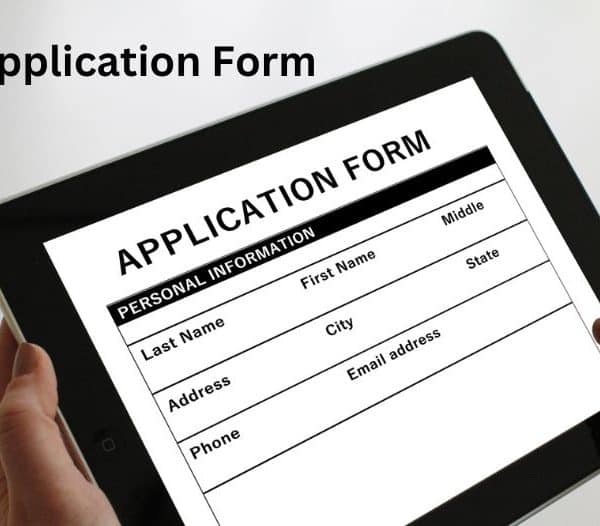Serving in the Indian army is a matter of pride and prestige. Is this your dream too?
NDA is a prominent entrance examination for the students who are preparing for Indian Defence Forces.
NDA is a tough examination, every year around 4 Lakhs of students apply for UPSC NDA. It is a dream for many young men.
Are you one of them? Well, then let us help you.
In this article, we will explain in detail the NDA examination and UPSC NDA syllabus 2021. So, hold on and read till the end because, with the right preparation and strategy, you can fulfil your dream.
NDA ( National Defense Academy)
The NDA examination is organised by UPSC. It is a national level exam that leads you to admission in various services i.e. Indian Army in the Navy, Indian Air Force.
This exam is conducted twice a year in India. Every year, 4 lakh candidates appear for the exam, out of which only 6000 appear for SSB Interview.
Overview of the Exam
# Conducting body: National Defense Academy is by UPSC.
# Mode: This exam is conducted offline.
# Time duration:
Mathematics- 2 hours 30 minutes
GAT- 2 hours 30 minutes
# Total Marks: 900 marks
# Exam Pattern:
Stage 1: Main Examination: It consists of two parts: Mathematics and General Ability Test.
Stage 2: SSB Interview
Exam Pattern
The Exam pattern is divided into two Stages: Written Examination and SSB Interview.
Written Examination is divided into two parts: Mathematics and General Ability Test.
The General Ability Test is further divided into two parts: the English test and the General Knowledge test.
Eligibility
# Candidates should be more than 18 years old.
# Education qualification:
National Defense Academy 12th passed/ HSC or equivalent from a Recognized University
Air Force, Navy Naval Academy of National Defense Academy 12th passed/ HSC with physics and mathematics.
# This examination is only for single man candidates.
Also Read: UPSC NDA 2021 Answer Key: Here’re the NDA Answer Keys, Eligibility & More
Process of NDA
Filling Application
All candidates have to fill in the application form, which can be submitted Both Offline and Offline.
The Commission will process the application. If found anything wrong, it can also reject the application form.
The candidates also get the date to withdraw their application from the application.
Release of Admit Card
After Three Weeks of the Exam Admit Card is released. The link to download is available on the official site UPSC.
Candidates can download their Admit Card, either with their Roll number or Registration number.
Examination
It comprises two sections Mathematics and General Ability Test. It consists of 900 questions for 900 marks. Each for two hours and thirty minutes.
UPSC NDA Results
After the Final Exam, the result is declared on the website. The candidate gets minimum marks and proceeds to the next level.
The candidate can log in through the roll number and get the Final Marksheet.
SSB Interview
SSB interview is the intelligence and personality test of the candidates. It is conducted in two stages.
Finally Selected Candidates will get the job roles in the Army, Navy, Air Force Wing of India based on their performance.
UPSC NDA Syllabus 2021
The main exam is divided into two parts, Mathematics and General Ability Test.
Mathematics
This section consists of 300 questions. Each question carries 300 marks.
Also Read: Is NDA Exam Date 2021 Postponed? Here’re the Latest Updates You were Looking For!
Types of Questions
Algebra
Sets, Venn diagrams, De Morgan laws, Cartesian product, relation, equivalence relation. Real numbers, Complex numbers, Modulus, Cube roots, Conversion of a number in Binary system to Decimals and vice-versa. Arithmetic, Geometric and Harmonic progressions. Quadratic equations, Linear inequations, Permutation and Combination, Binomial theorem and Logarithms.
Calculus
Concept of a real-valued function, domain, range and graph of a function, Composite functions, one to one, onto and inverse functions, Notion of limit, Standard limits – examples, geometrical and physical interpretation of a derivative – applications, Derivative of a function at a point, the derivative of a composite function, Second-order derivatives, Increasing and decreasing functions, Application of derivatives in problems of maxima and minima, Continuity of functions – examples, algebraic operations on continuous functions,
Vector Algebra
Vectors in two and three dimensions, scalar multiplication of vector, Unit and null vectors, scalar product or dot product of two vectors, and in geometrical problems, magnitude and direction of a vector, Applications-work did by a force and moment of a force, the addition of vectors, Vector product and cross product of two vectors.
Integral Calculus and Differential Equations
Integration by substitution and by parts, trigonometric, Evaluation of definite integrals – determination of areas of plane regions bounded by curves – applications, solution of the first order and first-degree differential equations of various types – examples, standard integrals involving algebraic expressions, Definition of order and degree of a differential equation, formation of a differential equation by examples, exponential and hyperbolic functions, General and particular solution of a differential equation, Integration as inverse of differentiation, Application in problems of growth and decay.
Matrices and Determinants
Types of Matrices, basic properties of determinant, Applications – Solution of a system of linear equations in two or three unknowns by Cramer’s rule and by Matrix Method, Determinant of a matrix, adjoint and inverse of a square matrix, operations on matrices.
Analytical Geometry
Distance formula, Rectangular Cartesian Coordinate system, Equation of a line in various forms, Standard forms of parabola, Distance of a point from a line, Ellipse and hyperbola, Angle between two linesEccentricity and axis of a conic, Equation of a circle in standard and inner form.
Point in a three-dimensional space, Direction Cosines and direction ratios, the angle between two lines and angle between two planes, the distance between two points, Equation of a plane and a line in various forms, Equation of a sphere.
Statistics
Frequency distribution, Classification of data, cumulative frequency distribution – examples Pie Chart, Frequency Polygon – examples, Measures of Central tendency – mean, median and mode, Variance and standard deviation – determination, Graphical representation – Histogram.
Probability
Outcomes and associated sample space, Bayes’ theorem – simple problems, impossible and certain events, Complementary, examples of random experiments giving rise to Binomial distribution, events, Union and Intersection of events, Definition of probability – classical and statistical – examples, Elementary theorems on probability – simple problems, Binomial distribution, mutually exclusive and exhaustive events, Binomial distribution, Random experiment, elementary and composite events, Conditional probability, Random variable as function on a sample space, examples of random experiments giving rise to Binomial distribution.
General Ability Syllabus
The general ability section comprises of two parts which are mentioned below:
English: Grammar and usage, comprehension, Vocabulary, and cohesion in extended text.
General Knowledge: The question paper comprises general knowledge and covers the subjects including Social Studies, General Science, GeographyPhysics, Chemistry, and Current Events.
Conclusion
NDA is a tough exam but with the right preparation and strategy, you can pass it easily. Looking for the right platform to kick off your preparation?
With expert teachers available as per your flexibility, customised courses, and programs, we at UPSC Pathshala offer exceptional guidance that can take your preparation to the next level. So waste no more time and simply visit UPSC Pathshala.
Also Read: UPSC Revised Calendar 2021: COVID Effects on UPSC Examination







This article has given me full knowledge about the NDA syllabus. I am an aspirant of NDA
I was searching for complete information which I got through this article. How are you guys preparing for NDA?